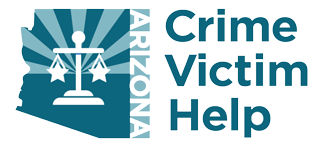Bullying
What is bullying?
Bullying is a pattern of unwanted, aggressive behavior by someone who has, or is thought to have, power over another person. Some bullying behavior may be a crime. Examples of criminal bullying include harassment, threatening or intimidating, assault, and sexual violence.

Physical bullying involves hurting a person’s body or belongings, such as hitting, kicking, biting, pinching, pulling hair, tripping, pushing, spitting, or taking or breaking someone’s things.

Verbal bullying is writing or saying things meant to hurt or scare another person, such as name calling, persistent taunting, threats to hurt or harm, or inappropriate sexual comments.

Social bullying involves trying to hurt someone by harming their relationships or reputation, such as leaving someone out of a group on purpose, embarrassing someone in public, or spreading rumors about someone.

Cyber or electronic bullying is when someone uses the internet, social media, or electronic devices to threaten, harass, intimidate, or otherwise hurt or embarrass someone.
It is important to understand the signs that someone may be bullied, is bullying others, or is witnessing bullying.
What can I do if I am being bullied or someone I know is being bullied?
If you or someone you know is being bullied, there are many things you can do.
If you or someone you know is being bullied at school, you can report the bullying behavior to a teacher, school counselor, or principal.
If you or someone you know is being bullied at school, you can report the bullying behavior to a teacher, school counselor, or principal.
Arizona law A.R.S. § 15-341(A)(36) requires schools to have policies and procedures to stop students from bullying other students at school, on school buses, and at school activities or events.
Arizona schools’ anti-bullying policies are required to include:
A way for students, parents, and school employees to report school bullying confidentially
Approved forms for students, parents, or school employees to use when reporting bullying
Definitions of bullying, harassment, and intimidation
Approved forms for students, parents, or school employees to use when reporting bullying
Definitions of bullying, harassment, and intimidation


A process for documenting bullying incidents
A process for investigating incidents thought to be bullying
Discipline for students found to have engaged in bullying
Ways to protect students physically harmed by bullying
A process for investigating incidents thought to be bullying
Discipline for students found to have engaged in bullying
Ways to protect students physically harmed by bullying
In addition to school policies, Arizona law requires that:
Schools provide all students at the beginning of each school year with a list of rights, protections, and support services available to students and
Schools provide the list of rights, protections, and support services to each victim of alleged bullying
Schools provide the list of rights, protections, and support services to each victim of alleged bullying

If someone is physically hurt or at risk of being harmed (or harming themselves), call for police or medical help right away.
You may want to contact law enforcement if the bullying involves:
You may want to contact law enforcement if the bullying involves:
-
any weapon such as a gun or knife
-
threats of or actual serious injury or harm
-
threats of violence motivated by hate, such as racism or homophobia
-
sexual abuse or sexual violence
I have reported bullying to the school, but nothing is being done. What can I do?
First, get help for the person being bullied.
Bullying can have a negative impact on a student’s physical safety, emotional well-being, and ability to learn. If you or the person being bullied is at immediate risk for hurting themselves or others, get help right away.
Bullying can have a negative impact on a student’s physical safety, emotional well-being, and ability to learn. If you or the person being bullied is at immediate risk for hurting themselves or others, get help right away.


Second, document the instances of bullying.
It might be helpful to keep a timeline of when reports of bullying were made and to document each incident. This might include:
It might be helpful to keep a timeline of when reports of bullying were made and to document each incident. This might include:
- Requesting a copy of the school’s bullying policy
- Keeping a record of the dates and times of specific incidents of bullying
- Keeping copies of any reports made, and make requests for desired resolutions in writing
Third, report the bullying to a school counselor, teacher, or principal.
If you have reported bullying to the school counselor, teacher, and principal without the problem being addressed, you may also want to notify the school superintendent or the Arizona Department of Education.
If you have reported bullying to the school counselor, teacher, and principal without the problem being addressed, you may also want to notify the school superintendent or the Arizona Department of Education.


A type of Protective Order (sometimes known as a Restraining Order) known as an Injunction Against Harassment (IAH) may be an available option to a victim of bullying depending on the bullying behavior.
An Injunction Against Harassment is a court order telling the defendant to stop harassing, annoying, or alarming another person.
An Injunction Against Harassment is a court order telling the defendant to stop harassing, annoying, or alarming another person.
Harassment is defined as “a series of acts over any period of time that is directed at a specific person...” or “one or more acts of sexual violence.”
More than one act of harassment must have occurred to qualify for an IAH. For more information about an Injunction Against Harassment, or for information about how to apply for one, click here.
When a school or school district fails to intervene or address bullying or harassment based on race, color, national origin, sex, disability, or religion, they may be violating federal civil rights laws enforced by the U.S. Department of Justice’s Civil Rights Division or the U.S. Department of Education’s Office of Civil Rights
With various legal options available to address bullying behavior, it can be difficult to make a decision on what to do. In many ways, talking an attorney can be helpful. Analyzing the situation, providing a list of options available and the pros and cons of each, and helping you move forward with your decision are some of things that an attorney can help with.
To find a lawyer visit, Legal Services Link Arizona.
To apply for free or reduced fee legal aid, AZLawHelp or call (866) 637-5341.
To find a lawyer visit, Legal Services Link Arizona.
To apply for free or reduced fee legal aid, AZLawHelp or call (866) 637-5341.




